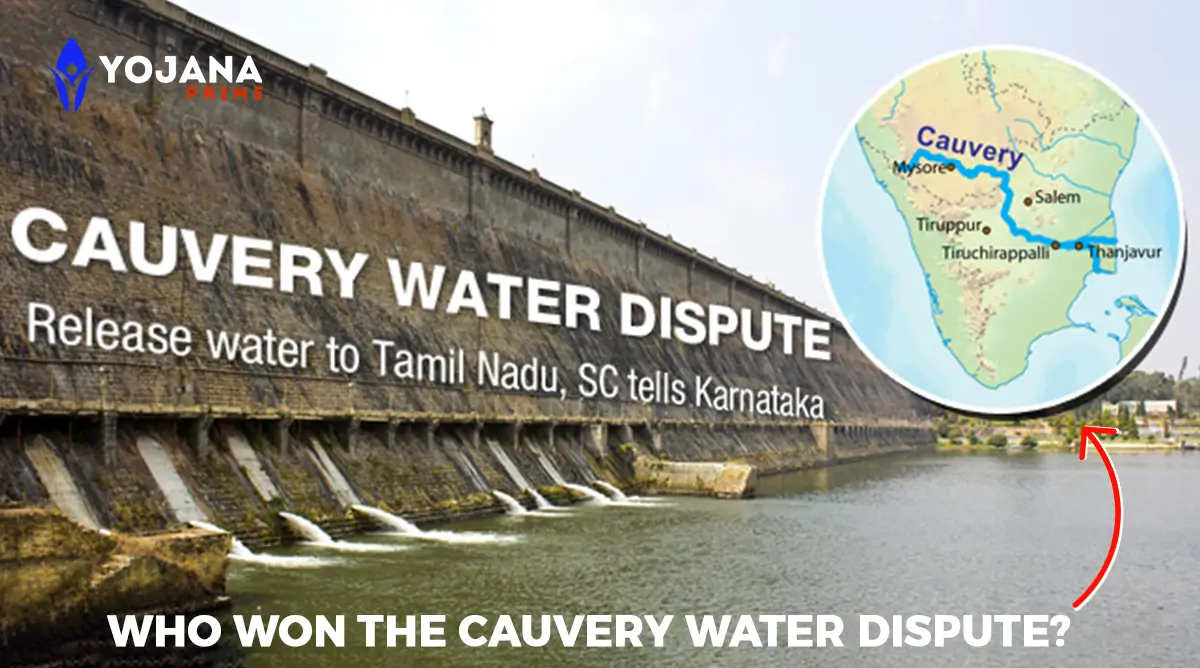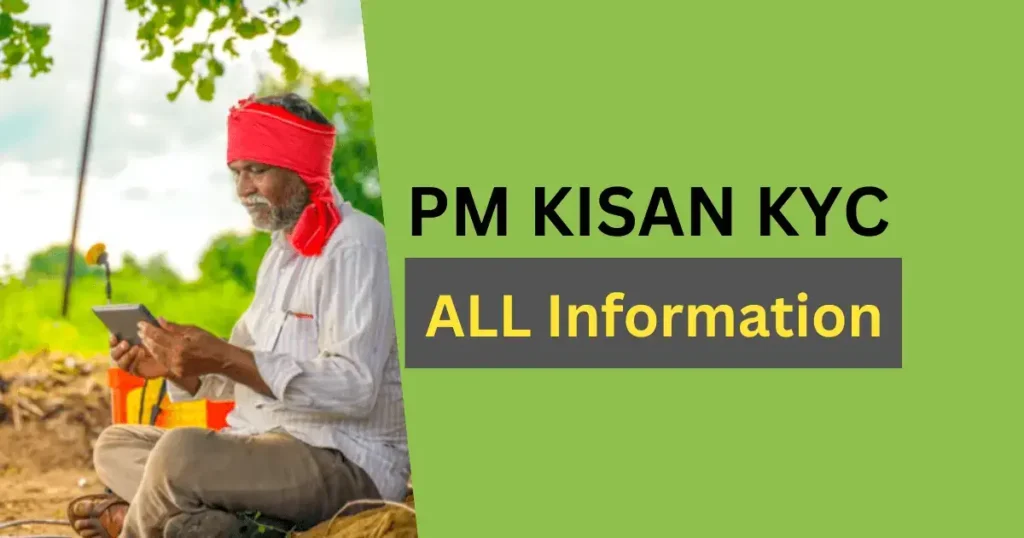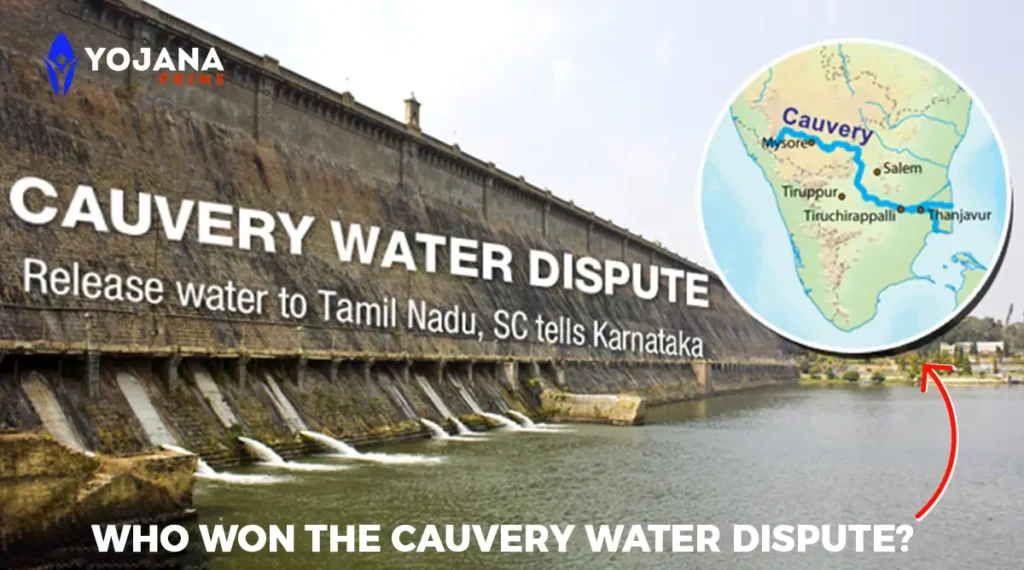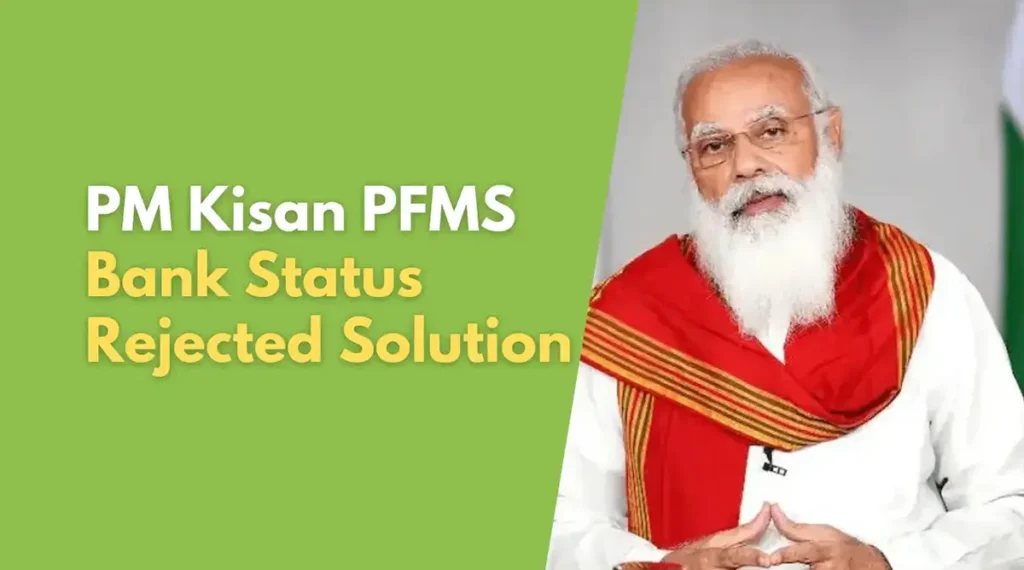The Cauvery water dispute, often called the Kaveri issue, is a long-standing conflict involving the states of Karnataka, Tamil Nadu, Kerala, and the Union Territory of Puducherry. The dispute centers around the allocation and utilization of water from the Cauvery River, an interstate basin that plays a crucial role in the region’s agriculture and livelihoods.
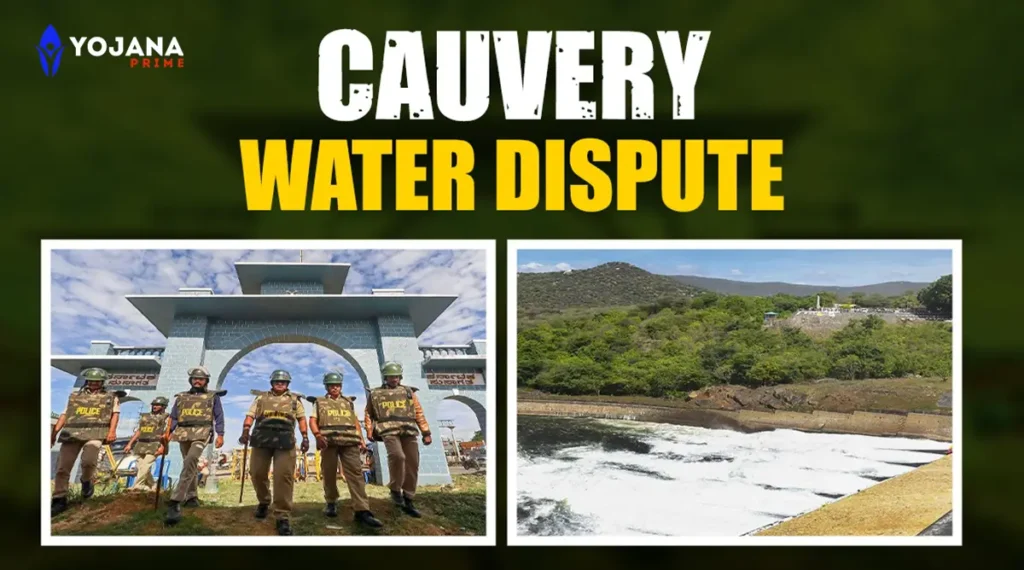
Popular Blog: PM Kisan FTO Process Issue Solution | FTO Generation in Easy Steps
Explained in Detail with step by step guide.
Origin and Course of the Cauvery River
The Cauvery River originates in Karnataka and flows through Tamil Nadu and Puducherry before draining into the Bay of Bengal. The total watershed of the Cauvery basin covers 81,155 sq km, with the river’s catchment area distributed as follows:
- Karnataka: 34,273 sq km
- Kerala: 2,866 sq km
- Tamil Nadu and Puducherry: 44,016 sq km
| Aspect | Details |
|---|---|
| River Origin | Karnataka |
| States Involved | Karnataka, Tamil Nadu, Kerala, Puducherry |
| Total Watershed Area | 81,155 sq km |
| Key Dams in Karnataka | Harangi Dam, Hemavati Dam, Krishna Raja Sagar Dam, Kabini Reservoir |
| Key Dam in Tamil Nadu | Mettur Dam |
| CWDT Formation Date | June 2, 1990 |
| Interim Order Date | June 25, 1991 |
| Annual Water Release | 205 TMC (thousand million cubic feet) to Tamil Nadu |
| Supreme Court Opinion Date | November 22, 1991 |
| Gazette Notification Date | December 10, 1991 |
| Cauvery River Authority (CRA) | Formed under the 1998 Scheme, chaired by the Prime Minister, with Chief Ministers of basin states and Secretary of Ministry of Water Resources as members. |
Popular Blog: PM Kisan Land Seeding Problem Complete Solution: Easy Steps
Explained in Detail with step by step guide.
Major Dams and Reservoirs
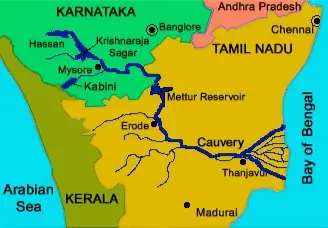
Karnataka:
- Harangi Dam: Constructed on the Harangi River, a tributary of the Cauvery.
- Hemavati Dam: Built on the Hemavati River, another tributary.
- Krishna Raja Sagar Dam: Located downstream of the Harangi and Hemavati dams on the main Cauvery River.
- Kabini Reservoir: Situated on the Kabini River, a tributary of the Cauvery, joining the Krishna Sagar Reservoir.
Tamil Nadu:
- Mettur Dam: Constructed across the mainstream of the Cauvery River.
The Central Water Commission has established two gauging and discharge (G&D) sites, Kollegal and Billigundlu, between the confluence of the Kabini and Mettur Dam on the Cauvery River. The Billigundlu site is approximately 60 km below the Mettur Dam, marking the border between Karnataka and Tamil Nadu.
Formation of the Cauvery Water Disputes Tribunal (CWDT)
To adjudicate the water dispute among Tamil Nadu, Karnataka, Kerala, and Puducherry, the Government of India constituted the Cauvery Water Disputes Tribunal (CWDT) on June 2, 1990.
Popular Blog: PM Kisan PFMS Bank Status Rejected Problem Solution
Explained in Detail with step by step guide.
Interim Orders and Supreme Court Involvement
- June 25, 1991: The CWDT passed an interim order directing Karnataka to release water to Tamil Nadu’s Mettur reservoir. Karnataka was to release 205 TMC (thousand million cubic feet) of water annually, distributed monthly or weekly.
- Water Release Schedule: Water was to be released in four equal weekly installments each month. Any shortfall was to be compensated in the subsequent week. Tamil Nadu was also required to release 6 TMC of water to the Karaikal region of Puducherry.
Presidential Reference and Supreme Court Opinion
- July 27, 1991: The President of India referred questions to the Supreme Court regarding the Tribunal’s order.
- November 22, 1991: The Supreme Court opined that the Tribunal’s order constituted a report and award under Section 5(2) of the Inter-State Water Disputes Act, 1956, and needed to be published by the Central Government to be effective.
Implementation of Tribunal Orders
- December 10, 1991: The interim order of June 25, 1991, was notified in the Gazette of India, binding it on the disputing parties.
- May 14, 1992: Tamil Nadu filed a case in the Supreme Court seeking implementation of the Tribunal’s decisions and issuance of the necessary notification.
Formation of the Cauvery River Authority
- April 9, 1997: The Supreme Court directed the Central Government to frame a scheme under Section 6A of the Inter-State Water Disputes Act, 1956, for the effective implementation of the Tribunal’s interim award.
- 1998: The Central Government notified the Cauvery Water (Implementation of Interim Orders of 1991 and all subsequent Tribunal Orders) Scheme, 1998. This included the establishment of the Cauvery River Authority (CRA) and a Monitoring Committee (CMC).
The CRA is chaired by the Prime Minister and includes the Chief Ministers of the basin states as members. The Secretary of the Ministry of Water Resources serves as the Secretary of this Authority. The Monitoring Committee is chaired by the Secretary of the Ministry of Water Resources, with the Chief Secretaries and Chief Ministers of the basin states as members.
Popular Blog: Check PM Kisan 17th Installment 2024 – A to Z Information
Explained in Detail with step by step guide.
Conclusion
The Cauvery water dispute, known as the Kaveri issue, remains a complex and ongoing challenge involving multiple states. The dispute highlights the need for cooperative water management strategies and the importance of equitable water distribution to ensure sustainable agricultural practices and regional harmony.
For more information on the Cauvery water dispute, visit the Central Water Commission website or contact local government offices.
FAQ’s (Frequently Asked Questions)
What is the Cauvery Water Dispute?
The Cauvery Water Dispute involves Karnataka, Tamil Nadu, Kerala, and Puducherry over sharing the Kaveri River‘s water. It has led to legal and political interventions, including the Cauvery Water Disputes Tribunal (CWDT) and Supreme Court rulings.
Who won the Cauvery water dispute?
The Cauvery Water Disputes Tribunal announced its final verdict on February 5, 2007. According to the verdict, Tamil Nadu is allocated 419 TMC of Cauvery water, while Karnataka receives 270 TMC. Karnataka must release 192 TMC annually to Tamil Nadu. Additionally, Kerala gets 30 TMC and Puducherry 7 TMC.
Why does Tamil Nadu need Cauvery water?
Tamil Nadu needs Cauvery water for:
1. Agriculture: Crucial for the Cauvery Delta’s rice production.
2. Drinking Water: Essential for towns and cities.
3. Industry: Supports various industrial needs.
What is the issue between Karnataka and Tamil Nadu water?
Karnataka and Tamil Nadu dispute over the sharing of Cauvery River water, with conflicts arising during droughts over how much water Karnataka should release to downstream Tamil Nadu.
Latest Articles
- PM Kisan CSC Login, Registration, Location (All Information)
- PM Kisan KYC CSC, Complete Process, Online & Offline
- PM Kisan Application Form PDF
- Cauvery Water Dispute: Detailed Analysis and Current Status
- Check PM Kisan 17th Installment 2024 – A to Z Information
- PM Kisan PFMS Bank Status Rejected Problem Solution

